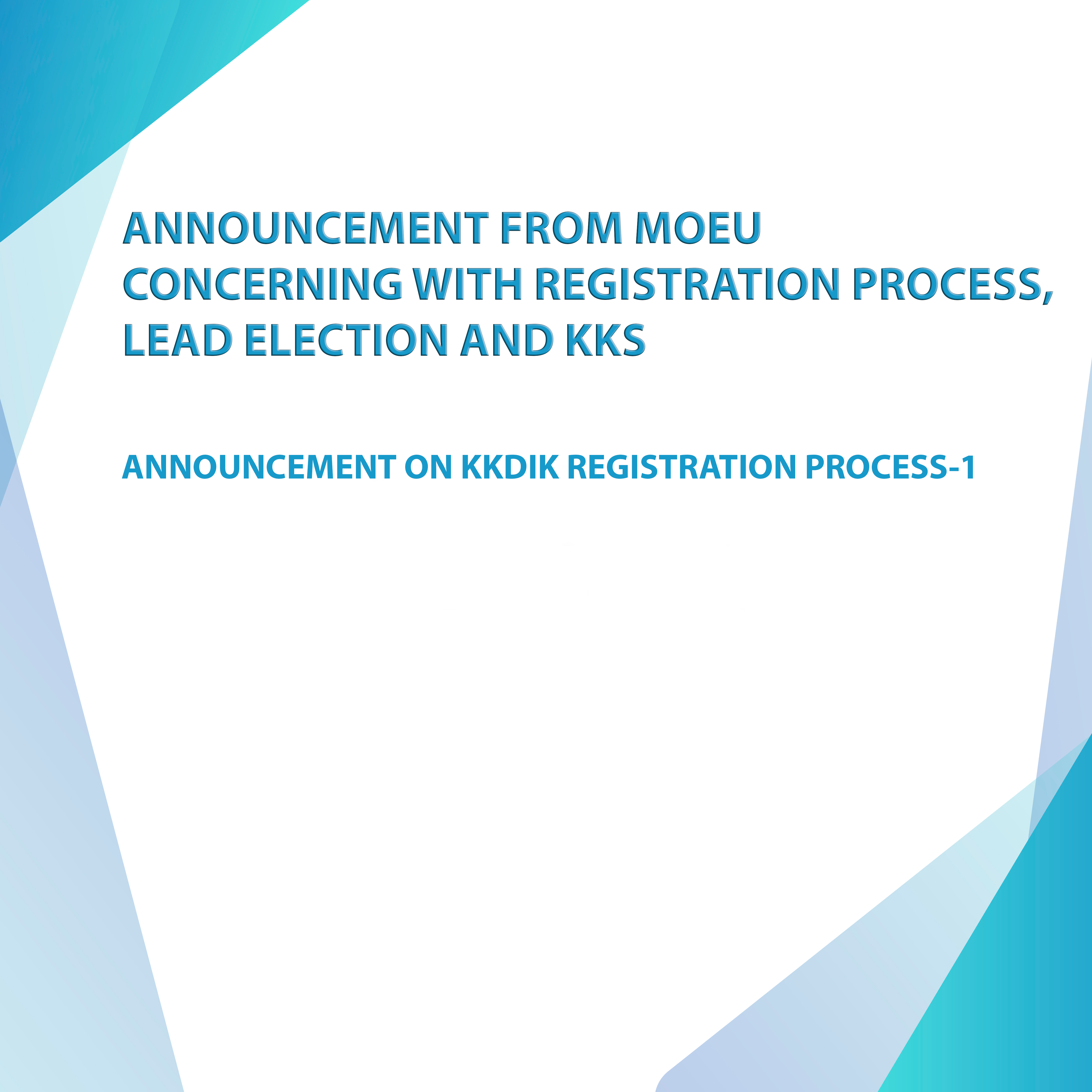
ANNOUNCEMENT FROM MOEU CONCERNING WITH REGISTRATION PROCESS, LEAD ELECTION AND KKS
ANNOUNCEMENT ON KKDIK REGISTRATION PROCESS-1
For substances manufactured or imported as such or in a mixture before 31/12/2023, if the annual amount is one tone or above, registration provisions are applied between 31/12/2020 and 31/12/2023.
Some of the important issues regarding the path you should follow in this process are listed below:
1. Companies that want to participate in the Substance Information Exchange Forum (SIEF) must complete their pre-SIEF submissions as soon as possible.
2. A joint registration file is sent for substances manufactured/imported by more than one manufacturer/importer in accordance with Article 12 of the KKDIK Regulation. For this, a SIEF query is made for substances for which a pre-SIEF was submitted. The companies in the SIEF are contacted.
3. In the SIEF, it is determined who will be the Lead Registrant.
4. The issues regarding available test data, data sharing, right to access data and cost sharing in the SIEF are clarified by the Lead Registrant.
5. Lead Registrant makes a declaration for lead registrant position to the Ministry through KKS. Information will soon be available on this issue.
6. After the Lead Registrant notifies the Ministry for their lead registrant position, it can submit the registration dossier.
7. After Lead Registrants are determined, the Lead Registrant information can be seen by other companies in the SIEF query of the substance.
8. While the Lead Registrant sends the registration file, it specifies member companies in their file. After Lead Registrant submits the registration file, the member companies are authorized to complete the relevant parts of the registration file for the relevant substance and submit it as a member.
9. The Lead Registrant chooses the highest tonnage in SIEF as the registration type template and fills the relevant parts.They give the tonnage information of their company in section 1.1 and pay the registration fee on the basis of their own tonnage band.
10. Member companies choose the registration type template that is “KKDIK Registration Member Application General”. They will pay the registration fee based on their tonnage band.
11. CHESAR, the Chemical Safety Assessment and Reporting Tool, will be integrated into the system by the last quarter of 2021, at the latest. Companies that are obliged to prepare a Chemical Safety Report (for substances manufactured/imported in quantities of 10 tones or above per year) can wait for the completion of the tool integration process. In this process, they can keep their data on the system by filling the parts related to the information requirements in the KKS.
Regarding downstream users:
12. Information exchange in the supply chain is extremely important in this process. This communication between manufacturers/importers and downstream users should be effective and clarified in commercial relations. From the suppliers of downstream users, receiving a statement indicating that they will add details of their use to the registration file will make the process effective.
13. The Downstream User Module, which will be used for situations that require downstream users to log in to KKS in accordance with Section 5 of the KKDIK Regulation, will be opened on January 3, 2022.
The text of the announcement can be accessed from the Chemical Registration System (KKS) tab of our Chemicals Help Desk; and also from the link:
